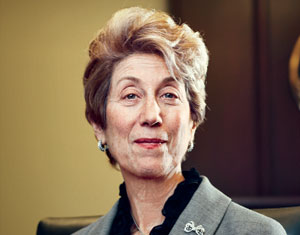Here in New York City where I live it, you can actually walk the streets and ride the subways at night and feel safe. The police have a visible presence throughout all 5 boroughs, chief among them being Manhattan where most people go for their 9 to 5 gig. There are over 22 million people living in the New York City metropolitan area, making it by far the biggest city in America. And out of all those millions of people, New York City only has about 400 homicides each year. When you do the math, that's less than 0.001% of the population. In other words, New York City is a safe city to live and work in. Many New Yorkers attribute this reality to the work that former Mayor Rudy Giuliani did in cleaning up the city's less desirable areas and creating a strong police presence. Mayor Mike Bloomberg has certainly doubled down on that police presence, but Bloomberg has taken it to another level. Upon becoming Mayor, Bloomberg's police force has purposely stopped and frisked hundreds of thousands of people each year who are, for the most part, just walking along minding their own business in their own neighborhoods. The undeniable majority of these stop-and-frisk actions involve young Black and Latino men. We've written about thisrepeatedlyon the blog in the past. The general consensus is that although we can appreciate the value of a safe city, the ends do not justify the means when there are less intrusive methods that can be used to reach the same result. This week a federal court has finally agreed with us:
Instead of ordering an end to the practice, U.S. District Court Judge Shira Scheindlin has opted to reform it. She did not give many specifics on how that would work but instead named an independent monitor who would develop reforms to policies, training, supervision, monitoring and discipline. She also ordered that officers test out body-worn cameras in the police precinct where most stops occurred."The city's highest officials have turned a blind eye to the evidence that officers are conductingstops in a racially discriminatory manner," she wrote. "In their zeal to defend a policy that they believe to be effective, they have willfully ignored overwhelming proof that the policy of targeting `the right people' is racially discriminatory."
Hon. Shira Scheindlin, U.S.D.J, Southern District of NY For years, police brass had been warned that officers were violating rights, but they nevertheless maintained and escalated "policies and practices that predictably resulted in even more widespread Fourth Amendment violations," Scheindlin wrote in a lengthy opinion.She also cited violations of the Fourth Amendment protection against unreasonable search and seizure."Far too many people in New York City have been deprived of this basic freedom far too often," she said. "The NYPD's practice of making stops that lack individualized reasonable suspicion has been so pervasive and persistent as to become not only a part of the NYPD's standard operating procedure, but a fact of daily life in some New York City neighborhoods."Four men sued the department in 2004, saying they were unfairly targeted because of they were minorities. Scheindlin issued her ruling after a 10-week bench trial, which included testimony from NYPD brass and a dozen people — 11 men and one woman — who said they were wrongly stopped because of their race.She found that nine of the 19 stops discussed at the trial were unconstitutional, and an additional five stops included wrongful frisking.Stop and frisk is a constitutional police tactic, but Scheindlin concluded that the plaintiffs had "readily established that the NYPD implements its policies regarding stop and frisk in a manner that intentionally discriminates based on race."There have been about 5 million stops during the past decade, mostly black and Hispanic men. The judge said she determined at least 200,000 stops were made without reasonable suspicion, the necessary legal benchmark, lower than the standard of probable cause needed to justify an arrest.The class-action lawsuit was the largest and most broad legal action against the policy at the nation's biggest police department, and it may have an effect on how other police departments make street stops, legal experts said.
Naturally, Bloomberg has no plans to take this decision lying down:
New York City Mayor Michael Bloomberg said he will appeal the decision of the federal judge ruling that the New York City Police Department's controversial stop-and-frisk policy violates individuals' constitutional rights because it intentionally discriminates based on race."Throughout the case, we didn't believe we were getting a fair trial, and this decision supports that belief," said Bloomberg, in a press conference held Monday in New York City.The ruling is a significant judicial rebuke for what the mayor and police commissioner have defended as a life-saving, crime-fighting tool."Our policies have made New York City the safest big city in America," said Bloomberg. "Murders are 50 percent below the level they were 12 years ago when we came into office. ... Stop-and-frisk is an important part of that success. It has taken some 8,000 guns off the streets."
This case poses a number of questions:
1. Assume for a moment that Bloomberg is correct and that Stop-and-Frisk is 100% responsible for making NYC the safest big city in America. If we know that said safety comes at the price of racial discrimination is it worth it?
2. Did Judge Scheindlin make the right call in revamping the stop-and-frisk program? Should she have done more (repealed the program) or less (let is stand)?
3. How do we make our City's safe while simultaneously respecting the constitutional rights of its residents?

